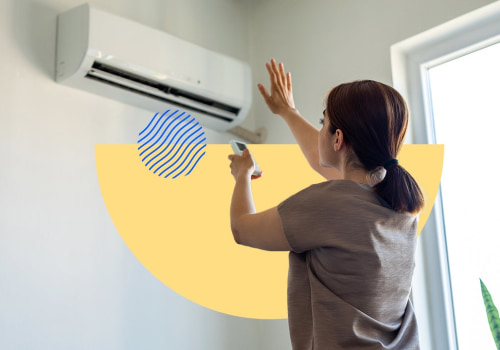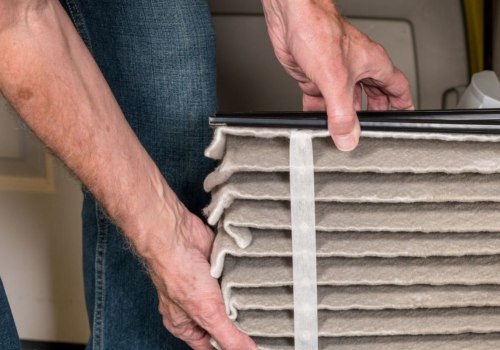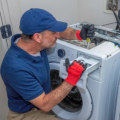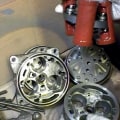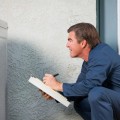Key Takeaways
- Avoiding errors during air conditioning setup is crucial for efficiency and longevity.
- Selecting an appropriately sized unit is essential for optimal performance.
- Adhering to local laws and codes is necessary to ensure compliance and safety.
- Professional installation is important to guarantee proper functioning of the system.
- Correct positioning of the AC unit significantly impacts its effectiveness.
- Proper insulation of ductwork is vital for energy efficiency and performance.
- Electrical considerations must be taken into account to prevent hazards.
- Testing the system after installation is critical to confirm it operates correctly.
- Regular maintenance is important to keep the system running smoothly over time.
10 Common Mistakes To Avoid During AC Installation | Understanding the Importance of Proper AC Installation
Proper AC installation is crucial for the overall efficiency and longevity of the system. One of the 10 Common Mistakes to Avoid During AC Installation involves neglecting routine maintenance, which can lead to significant failures down the line. This common mistake often stems from the assumption that once the unit is installed, it will run smoothly without further attention. In reality, regular maintenance is essential to prevent errors that can inflate maintenance costs and diminish performance. By understanding the importance of proper installation and the potential consequences of overlooking these critical steps, homeowners can ensure a reliable and efficient cooling system for years to come.
10 Common Mistakes to Avoid During AC Installation | Why Accurate Installation Matters
Accurate installation of an air conditioning unit is crucial for ensuring optimal performance and energy efficiency. Failing to recognize the 10 Common Mistakes to Avoid During AC Installation can lead to serious issues, such as improper insulation and the risk of leaks. These problems not only compromise the comfort of your living space but also require costly repairs and ongoing maintenance. Attention to detail during installation can prevent these pitfalls and enhance the longevity of the system.
Choosing the right professionals and adhering to guidelines helps mitigate risks associated with air conditioning installation. Knowledge of the 10 Common Mistakes to Avoid During AC Installation empowers homeowners to make informed decisions. Proper sealing, insulation, and strategic placement can dramatically reduce energy consumption while avoiding frequent breakdowns. Prioritizing an accurate installation paves the way for a reliable AC unit that performs efficiently for years to come.
| Mistake | Description | Impact |
|---|---|---|
| Improper Sizing | Choosing an AC unit that is too large or too small for the space. | Leads to inefficient cooling and higher energy bills. |
| Poor Ductwork | Neglecting to seal ducts properly can lead to air leaks. | Reduces system efficiency and air quality. |
| Incorrect Refrigerant Levels | Failing to charge the system with the right amount of refrigerant. | Can cause compressor damage and decreased cooling capacity. |
| Improper Location of Unit | Placing the AC unit in a location with poor airflow. | Results in inefficiency and potential overheating. |
| Lack of Insulation | Not insulating ducts properly. | Increases energy consumption and can lead to frost build-up. |
The Impact of Installation on System Performance
Proper installation plays a crucial role in determining the efficiency of an air conditioning system. Neglecting to address key factors, such as the installation location and the drainage system, can lead to significant performance issues. The 10 common mistakes to avoid during AC installation often include incorrect sizing, placement, and wiring, which can drastically reduce the system’s ability to cool effectively. These installation mistakes not only affect comfort levels but can also increase energy costs over time.
A well-executed installation ensures optimal airflow and temperature control, impacting overall system performance. By avoiding the common installation mistakes outlined in the 10 common mistakes to avoid during AC installation, homeowners can achieve a more energy-efficient cooling solution. Proper attention to detail in the installation phase can prevent potential issues that may arise later, ultimately ensuring longevity and reliability for the HVAC system.
Mistake 1: Neglecting to Choose the Right Size Unit
Choosing the right size AC unit is crucial in achieving optimal performance and energy efficiency. Many homeowners fall into the trap of making diy installation mistakes by selecting a unit that is either too small or too large for their space. This leads to improper installation outcomes, as an undersized unit struggles to cool adequately, while an oversized one cycles on and off frequently, wasting energy. Awareness of the room size and specific cooling needs is essential to avoid these common mistakes homeowners often encounter. Employing proper installation techniques and consulting with professionals can significantly mitigate the risks associated with these frequent mistakes homeowners make, ensuring the longevity and effectiveness of the air conditioning system.
Assessing Room Size and Cooling Needs
Properly assessing room size and cooling needs is crucial for effective air conditioning. Many homeowners overlook this aspect, which is one of the 10 Common Mistakes to Avoid During AC Installation. Installation practices should include calculating the square footage of each room and considering factors such as ceiling height, insulation quality, and the number of windows. This careful evaluation helps determine the appropriate BTU capacity for the AC unit, ensuring compliance with installation guidelines.
Ignoring these assessments can lead to improper installation and inadequate cooling performance. Common mistakes include selecting a unit that is too large or too small, resulting in inefficient operation and increased energy costs. Following proper installation procedures not only enhances comfort but also prolongs the lifespan of the unit. Addressing room size and cooling needs is integral to achieving proper installation and avoiding the pitfalls highlighted in the 10 Common Mistakes to Avoid During AC Installation.
Consequences of Improper Sizing
Choosing the wrong size AC unit is a prominent common mistake often made during installation. An undersized unit will struggle to cool the space effectively, leading to constant operation and elevated energy costs. Conversely, an oversized unit will cycle on and off too frequently, causing wear and tear. These avoidable errors can significantly diminish the lifespan of the system and impact indoor comfort levels.
The repercussions of improper sizing extend beyond mere inefficiency. Several mistakes, such as failing to account for room characteristics or insulation levels, can lead to significant discomfort and increased humidity levels. Successful installation doesn’t hinge solely on selecting an AC that fits; it requires careful evaluation of the specific cooling needs of the area. Understanding these potential consequences highlights the importance of avoiding this common mistake in the 10 Common Mistakes to Avoid During AC Installation.
Mistake 2: Ignoring Local Regulations and Codes
Ignoring local regulations and codes is one of the 10 Common Mistakes to Avoid During AC Installation. Compliance with these regulations ensures not only efficient installation but also the safety and legality of the project. Such mistakes can lead to fines and may require costly reinstallation. Understanding the specific requirements within your jurisdiction before starting the installation process is crucial. Taking the time to do the installation right by following codes will contribute to a smoother operation of your air conditioning system and prevent future headaches.
Importance of Compliance with Building Codes
Compliance with building codes is essential for ensuring safe and effective air conditioning installation. Many past mistakes stem from ignoring these regulations, leading to common errors that can compromise the entire installation process. An installation guide that adheres to local codes minimizes risks and provides a framework for optimal performance. Understanding these codes helps homeowners avoid pitfalls that could result in costly modifications or even system failures in the future.
Following building codes also facilitates the proper execution of the installation process. These regulations often dictate safety standards and equipment specifications that directly influence the unit's performance. Proactive maintenance prevents issues that could arise from non-compliance, securing the longevity of the system. Recognizing the 10 Common Mistakes to Avoid During AC Installation includes acknowledging the importance of adhering to these essential guidelines.
- Ensures safety for occupants and reduces risks of accidents or hazards.
- Improves system efficiency and performance by following specified guidelines.
- Minimizes the likelihood of costly repairs or replacements down the line.
- Enhances property value by ensuring compliance with local regulations.
- Simplifies the inspection and approval process by local authorities.
- Protects homeowners from legal issues related to non-compliance.
- Promotes environmentally responsible practices by aligning with energy efficiency standards.
How Permits Affect Installation
Permits play a critical role in the overall success of any AC installation project. Compliance with local regulations not only ensures that the installation meets safety and quality standards but also protects the homeowner from potential mistakes associated with unpermitted work. Many ACs have specific installation requirements dictated by these permits, making adherence essential for a quality installation that operates efficiently and safely.
Ignoring the need for permits can lead to complications that may arise later. Homeowners could face fines or be forced to redo the installation, wasting both time and money. The 10 Common Mistakes to Avoid During AC Installation includes neglecting permits as a significant error to avoid. Ensuring proper documentation and following local guidelines contributes to a smoother process and fewer headaches down the line for countless AC installations.
Mistake 3: Skipping the Professional Installation
Skipping professional installation remains one of the 10 Common Mistakes to Avoid During AC Installation. Many homeowners consider diy installation as a cost-effective alternative, but this approach often leads to prevalent mistakes that can compromise system performance and longevity. Professional installers bring expertise that ensures the unit is set up correctly, minimizing the likelihood of common issues such as improper connections or inadequate airflow. Without their knowledge, homeowners may overlook essential steps that affect future maintenance practices. Routine maintenance offers the best opportunity to keep the system running efficiently, but if the initial installation is flawed, even the most diligent upkeep may not resolve underlying problems caused by improper setup. Prioritizing professional assistance can prevent these pitfalls and enhance the reliability of your air conditioning system.
Benefits of Hiring Experienced Technicians
Hiring experienced technicians for AC installation significantly reduces the chances of committing the 10 Common Mistakes to Avoid During AC Installation. Professionals possess the expertise to avoid issues like incorrect thermostat installation, which can lead to inefficient cooling and increased energy costs. Their knowledge ensures that every aspect of the installation is handled correctly, from sizing the unit to ensuring proper electrical connections.
Choosing professional installation also encourages an ongoing maintenance strategy that keeps your system running smoothly. Regular maintenance is crucial for optimal performance and longevity of the air conditioning system. Technicians can identify potential mistakes and address them before they escalate into larger issues, ensuring that your investment provides the comfort and reliability you expect throughout its lifespan.
- Reduced risk of costly mistakes during installation
- Improved efficiency and performance of the AC unit
- Longer lifespan of the air conditioning system
- Enhanced energy savings due to proper installation
- Access to expert advice on system choice and placement
- Ability to troubleshoot and resolve issues quickly
- Assurance of compliance with local building codes and regulations
Risks Associated with DIY Installation
Choosing to handle an AC installation as a DIY project often leads to significant mistakes that can compromise system efficiency. Among the 10 Common Mistakes to Avoid During AC Installation, overlooking the complexities of a new installation tops the list. Without the expertise of a trained technician, homeowners may face frequent repairs due to improper setup. This lack of professional input can also expose the system to electrical issues, resulting in further complications and potential safety hazards down the line.
The allure of a cost-effective installation without professional assistance can quickly diminish when unforeseen problems arise. Homeowners may save money initially, but the long-term consequences of DIY installations can include higher repair bills and a compromised warranty. Understanding the risks associated with not hiring professionals is essential in avoiding the 10 Common Mistakes to Avoid During AC Installation, ensuring both safety and system longevity.
Mistake 4: Incorrect Placement of the AC Unit
Correct placement of the AC unit plays a crucial role in the overall efficiency of the HVAC installation process. A slight mistake in positioning can lead to numerous issues, including reduced cooling performance and increased energy costs. Ensuring that the AC unit is installed away from heat sources and obstacles is vital for optimal airflow and functionality. Many homeowners overlook this aspect, which counts as one of the 10 common mistakes to avoid during AC installation. Proper placement not only enhances performance but also minimizes the need for extensive essential maintenance tasks in the future. By avoiding incorrect placement, homeowners can enjoy a more comfortable living environment and extend the lifespan of their cooling system.
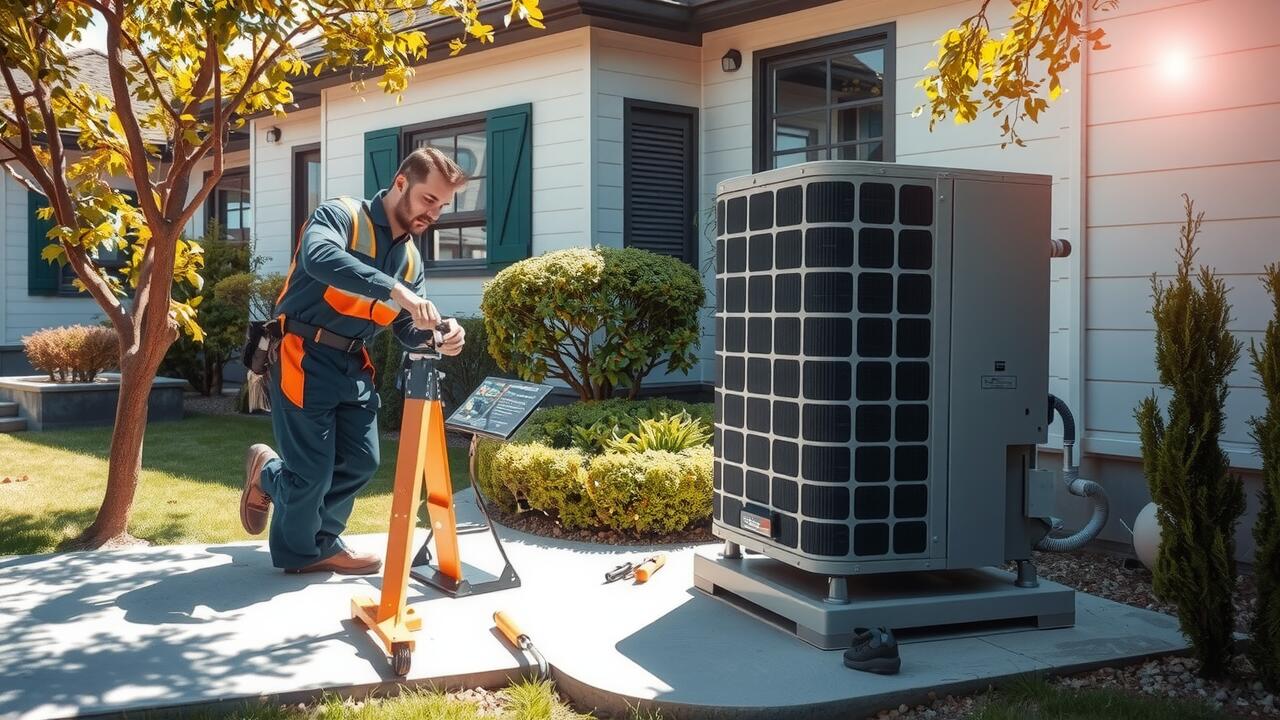
Optimal Locations for Maximum Efficiency
Choosing the right location for an air conditioning unit is critical to ensuring optimal efficiency. A well-placed unit not only maximizes cooling but also minimizes energy consumption. Many homeowners fall into the trap of common air conditioner mistakes by placing their systems too close to heat sources or in shaded areas that obstruct airflow. Understanding the importance of strategic positioning is essential in the meticulous installation process to avoid the 10 common mistakes to avoid during AC installation.
Avoiding errors during HVAC installation requires careful consideration of the surroundings. Installers should assess factors like sunlight exposure and potential obstructions to airflow. Units placed in less-than-ideal spots can lead to increased energy bills and reduced lifespan, which might result in costly repairs that aren't covered by warranties. Recognizing these pitfalls and adhering to optimal placement guidelines ensures that your system operates at peak performance, steering clear of the 10 common mistakes to avoid during AC installation.
Avoiding Obstructions and Heat Sources
Proper placement of an AC unit is essential for maximizing its efficiency. One of the significant 10 Common Mistakes to Avoid During AC Installation is overlooking potential obstructions and sources of heat. Installing an air conditioner near objects like trees, furniture, or walls can lead to poor airflow and reduced cooling performance. Professional installation contributes to identifying these obstacles and ensuring the unit is positioned for optimal airflow. Failure to account for these factors may result in system problems, including increased energy consumption and common drainage issues.
Heat sources, such as direct sunlight and appliances, can also negatively impact the cooling capabilities of an AC system. Placing an air conditioning unit too close to heat-generating devices may lead to inefficient operation and premature failures. Proper insulation around the ducts can help mitigate some of these issues, but it is crucial to position the unit in a way that minimizes heat exposure. Understanding these aspects is vital in preventing the 10 Common Mistakes to Avoid During AC Installation, which can save homeowners from costly repairs and ensure long-lasting comfort.
Mistake 5: Failing to Insulate Ductwork Properly
Proper insulation of ductwork is essential for maximizing the efficiency and performance of an air conditioning system. One of the 10 Common Mistakes to Avoid During AC Installation is neglecting this critical aspect, leading to energy loss and increased utility bills. Insufficiently insulated ducts can also create maintenance access challenges, making it harder for technicians to perform necessary upkeep. Professional installers understand that failing to comply with insulation standards can result in non-compliance with local building codes, potentially causing costly issues down the line. Awareness of these common pitfalls is crucial for homeowners aiming to ensure optimal system function and longevity.
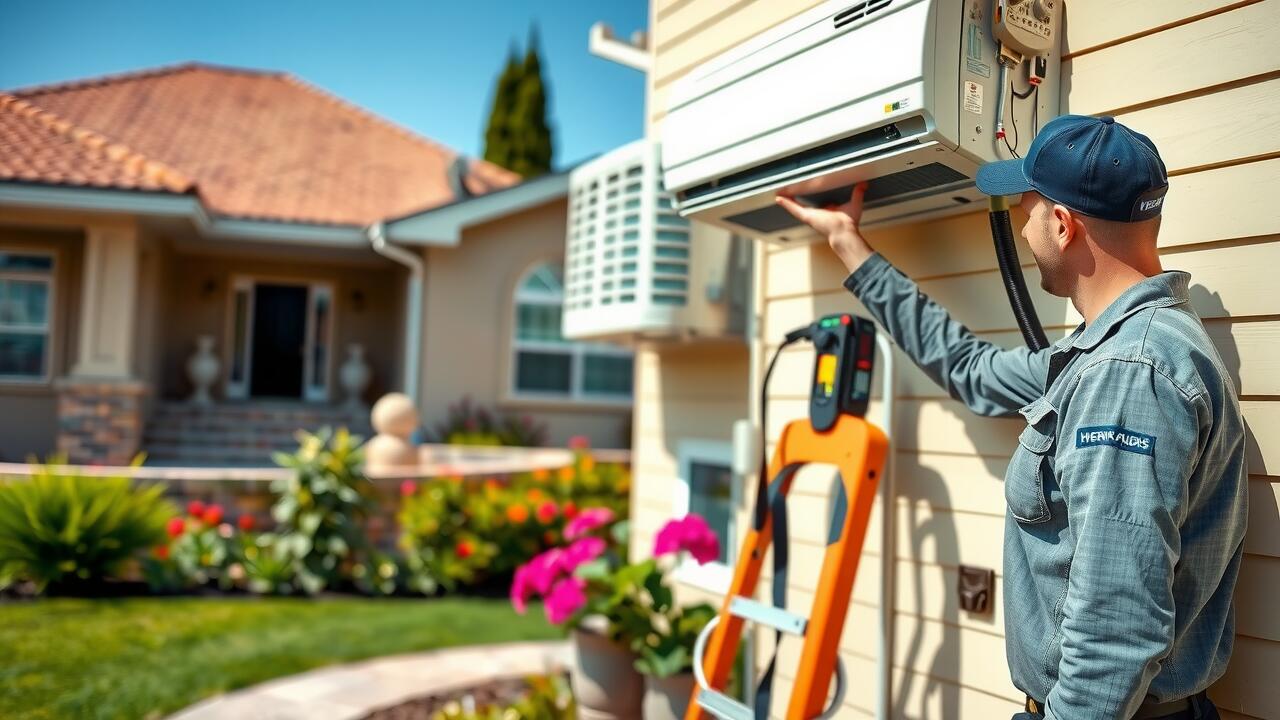
Importance of Duct Insulation
Proper duct insulation plays a crucial role in the overall efficiency of an air conditioning system. Without sufficient insulation, conditioned air can escape, leading to increased energy consumption and reduced cooling performance. As outlined in the 10 Common Mistakes to Avoid During AC Installation, neglecting duct insulation can contribute to system failures over time. This oversight not only results in discomfort but can also accelerate the wear and tear of the AC unit, ultimately leading to premature system failure.
Failing to insulate ductwork adequately can create significant problems in the long run. During the post-installation phase, technicians should ensure that all ducts are properly sealed and insulated to prevent air leaks. Ignoring this aspect may result in improper wiring and other issues that compromise the system's effectiveness. Addressing these common mistakes upfront is essential to avoid costly repairs and ensure long-lasting performance.
Common Duct Mistakes to Avoid
Proper duct insulation is crucial for an AC system's efficiency. Poor insulation can lead to significant energy loss, causing the unit to work harder. This increased strain can result in costly repairs and even premature system failure. Ignoring problems related to ductwork can escalate into severe issues, impacting overall cooling performance and indoor air quality. Recognizing common duct mistakes is essential in the context of the 10 Common Mistakes to Avoid During AC Installation.
Homeowners often overlook routine inspections of their duct systems, which can harbor dust, debris, or leaks. These hidden problems may go unnoticed, leading to reduced airflow and increased energy bills. Regular maintenance checks can help identify these issues early on, preventing the need for extensive repair work down the line. To avoid becoming part of the costly consequences associated with insufficient duct care, it is vital to understand and address these common mistakes as part of the 10 Common Mistakes to Avoid During AC Installation.
Mistake 6: Overlooking Electrical Considerations
Electrical considerations are a critical aspect of the installation process that often gets overlooked. Proper electrical wiring and sizing are essential to ensure the AC unit operates efficiently and safely. A professional installer can help determine the right specifications, which directly impact system performance and longevity. Neglecting these aspects can lead to costly issues, such as frequent breakdowns or increased maintenance costs. Even something as simple as a dirty filter installed improperly can exacerbate electrical demands, placing unnecessary strain on the system. Prioritizing electrical considerations not only enhances performance but also contributes to a more efficient and cost-effective cooling solution.
Ensuring Proper Electrical Wiring and Sizing
Proper electrical wiring and sizing are crucial aspects of AC installation that should not be overlooked. One of the 10 Common Mistakes to Avoid During AC Installation involves inadequate assessment of the electrical system’s capacity. An experienced installer needs to ensure that wiring can handle the load from the air conditioning unit. Failure to grasp these requirements often leads to operational problems, which can compromise the system’s efficiency. Common duct insulation practices are also affected when electrical issues arise, highlighting the interconnected nature of these components.
Failing to address electrical considerations could result in the need for extensive repairs during scheduled maintenance. Incorrect wiring can cause the system to draw too much power, triggering safety mechanisms or even leading to system shutdowns. Proper thermostat installation is another factor closely tied to electrical configuration. This oversight falls within the realm of the 10 Common Mistakes to Avoid During AC Installation and can significantly impact the performance and longevity of the unit.
Importance of Circuit Breakers and Safety
Circuit breakers play a crucial role in ensuring the safety of your air conditioning system. Properly sized and installed circuit breakers can prevent electrical overloads, which may lead to significant damage or even fire hazards. By avoiding 10 common mistakes to avoid during AC installation, such as hiring the wrong contractor, you can ensure that the electrical components meet safety standards. This not only enhances performance but also protects against potential drainage problems that can arise from faulty installations.
Regular maintenance of the electrical system is essential for optimal AC operation. Neglecting circuit breaker checks can lead to serious issues, making it vital for homeowners to prioritize this aspect of installation. Correct circuit breaker installation serves as a safeguard against unforeseen electrical failures. Taking the time to address these factors can prevent costly repairs and ensure the longevity of your air conditioning unit.
Mistake 7: Not Testing the System Post-Installation
Testing the system post-installation is a crucial step often overlooked in the 10 Common Mistakes to Avoid During AC Installation. Without thorough checks, potential issues like leaks may go unnoticed, leading to inefficient cooling and increased utility bills. Adequate insulation plays a significant role in ensuring that the system operates as intended. Engaging a professional HVAC technician to conduct these tests can help identify any required repairs or adjustments, ultimately enhancing the system's performance and longevity. Proper verification after installation safeguards against future problems and contributes to a more satisfying and reliable cooling experience.
Procedures for System Testing
Testing the system after installation is crucial for identifying potential issues that could affect efficiency. Homeowners should run the air conditioning unit to ensure it cools effectively throughout the space. During testing, it's also essential to check the drainage system for proper functionality. A well-functioning drainage system prevents water buildup, which can lead to mold and damage.
After initial testing, monitoring the system over the first few days can help spot any irregularities. Homeowners should pay attention to unusual noises or fluctuating temperatures. These are signals that may indicate the presence of one of the 10 Common Mistakes to Avoid During AC Installation. Addressing these concerns promptly will ensure the unit operates smoothly and efficiently in the long run.
Identifying and Addressing Potential Issues
The installation process can often unveil underlying issues that went unnoticed before, making it crucial to address them promptly. Many homeowners overlook these potential problems, but recognizing past mistakes can significantly improve the performance of an AC unit. An effective installation guide will encourage thorough testing after installation, helping to spot common errors like refrigerant leaks or insufficient airflow that could compromise efficiency. Being vigilant during this phase reduces the risk of future breakdowns.
Proactive maintenance prevents many issues from escalating into costly repairs. Establishing a regular maintenance schedule is vital for ensuring the system runs efficiently over time. By addressing any identified problems during the installation phase, homeowners can create a foundation for a reliable cooling system. Adhering to the recommendations from the installation guide minimizes the likelihood of encountering the 10 Common Mistakes to Avoid During AC Installation in the future.
Mistake 8: Disregarding Maintenance Requirements
Overlooking maintenance requirements is a common mistake that can lead to significant issues for AC systems. Routine maintenance is essential to ensure optimal performance and efficiency. Neglecting this aspect can result in failure, where minor issues evolve into costly repairs. An error in maintenance practices can also inflate long-term maintenance costs, reducing the unit's overall lifespan. Recognizing the importance of consistent upkeep is crucial, as highlighted in the 10 Common Mistakes to Avoid During AC Installation, helping homeowners save money and ensure reliable cooling.
| Maintenance Task | Frequency | Benefits |
|---|---|---|
| Replace Air Filters | Every 1-3 months | Improves air quality and system efficiency |
| Clean Coils | Once a year | Enhances cooling efficiency and prolongs lifespan |
| Check Refrigerant Levels | Annually | Prevents system overwork and decreases energy costs |
| Inspect Ductwork | Every 3-5 years | Reduces energy waste and improves airflow |
Conclusion
Proper AC installation is crucial for ensuring optimal performance and efficiency. The 10 Common Mistakes to Avoid During AC Installation highlight how even a slight mistake can lead to significant issues that compromise the system's functionality. Understanding the hvac installation process is essential for homeowners, as it allows them to recognize the importance of selecting the right size unit, adhering to local regulations, and ensuring professional installation. Regular upkeep and essential maintenance tasks are equally vital in prolonging the life of the unit and preventing costly repairs. By learning from these mistakes, homeowners can achieve a reliable and efficient air conditioning system.
FAQS
What are some critical mistakes to avoid during AC installation that can lead to countless ACs facing maintenance costs and the need for free repairs?
During AC installation, it's essential to avoid critical mistakes such as improper insulation upgrades and ensuring a dirty filter installed. These errors can lead to countless ACs requiring unnecessary maintenance costs and potentially result in the need for free repairs in the future.
What are potential consequences of having a dirty filter installed during AC installation that may increase maintenance costs?
Installing a dirty filter during AC installation can lead to various issues, including reduced air quality and decreased efficiency, which ultimately results in higher maintenance costs. A clean filter is essential for the system to operate effectively and prolong its lifespan, preventing costly repairs.
What problems might arise from not properly addressing a dirty filter installed during AC installation?
Failing to address a dirty filter installed during AC installation can lead to increased maintenance costs, as it can cause the system to work harder than necessary, resulting in overheating and potential breakdowns.
How does a dirty filter installed during AC installation impact overall maintenance costs?
A dirty filter installed during AC installation can significantly increase maintenance costs over time. When a filter is not regularly cleaned or replaced, it restricts airflow, making the AC unit work harder to cool the space. This added strain on the system can lead to more frequent repairs and higher energy bills, ultimately contributing to increased maintenance costs.
What are the effects of a dirty filter installed during AC installation on overall system efficiency?
Installing a dirty filter during AC installation can significantly impact overall system efficiency, leading to increased maintenance costs.1 Regular maintenance of your AC system ensures filters are clean, which helps in avoiding costly repairs associated with a dirty filter installed.a.

